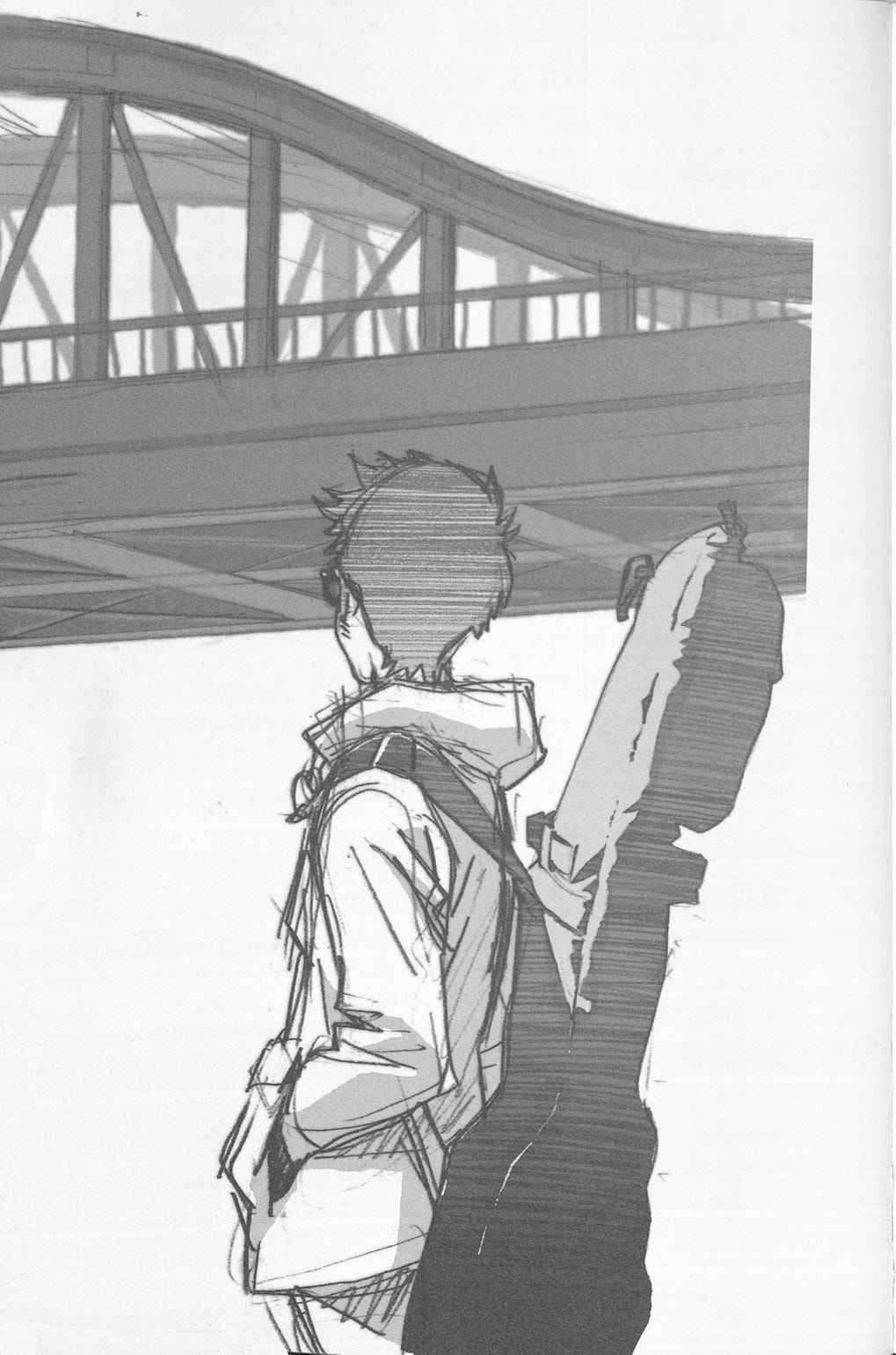FLCLick Noise - Archival Scan Upload & [Completed] Translation Project
Master Post & Table of Contents
Table of Contents:
Introduction & Character Sheets (Pages 1 - 16)
Prologue (Pages 17 - 22)
Episode 1 (Pages 23 - 45)
Episode 2 (Pages 46 - 60)
Episode 3 (Pages 61 - 74)
Episode 4 (pages 75 - 92)
Episode 5 (Pages 93 - 108)
Episode 6 (Pages 109 - 122)
Epilogue (Pages 123 - 130)
Bonus Track (Pages 131 - 137)
FLCLick Noise is a book published in 2010 that is a deep dive into the production of and creative influences that went into the 2000 anime FLCL by Studio GAINAX. Framed as a conversation between FLCL director and series lead Kazuya Tsurumaki, and FLCL character designer Yoshiyuki Sadamoto, the two creatives watch the show together and record their thoughts episode-by-episode, alongside a prologue and a “bonus track”. It is in Japanese, with primarily text and screenshots from the show for use as conversational reference, though there is some art as well (almost all of which is available elsewhere).
FLCL is pretty infamous as a show for its free-wheeling compositional style and loose production process; everyone involved was able to throw in visual ideas, dialogue, plot concepts, and so on. Additionally, FLCL slots pretty cleanly into GAINAX’s “otaku commentary” oeuvre - it is very much anime, *extremely* anime, it would be ludicrous to suggest otherwise; but in addition to being anime it was also a vehicle for the creative team to put in ideas and influences that they believed the anime industry was not utilizing at the time, such as its rock-album concept soundtrack or its josei/seinen manga-inspired character designs.
It is this backdrop that makes a book like FLCLick Noise simultaneously more valuable for understanding FLCL than most other shows, and even possible to exist in the first place. Much of it is fun asides, many of the creative decisions are personal whims, but there is so much to those whims that it is worth reading a book about them. If you want to answer the question “why does FLCL exist the way that it does”, this book will answer that question in more detail than any other source will.
If you want to get a sample of what the book contains, anime-youtuber-extraordinaire Hazel quasi-coincidentally released a video essay on FLCL that has an entire section on this book and its contents (I learned of this book from her tweeting about it during research for the video, so the timeline is not pure kismet). If you want the highlights and so much more, it is an amazing video and I heartily recommend it.
Meanwhile, the translation is now complete, as you can see above! I am not a professional translator by any means and simply write as a hobby; this translation should be treated as “rough” (but hopefully clear prose-wise) and will have mistakes. I believe the intent of the speakers can be seen, even if some nuance is lost, and I don’t expect many massive errors. I will include occasional images of the pages in the translation when it has relevant art or other information.
As always, I hope this is a valuable addition to the ‘Akashic record’ of 90’s-era anime history, and gives something special to the FLCL-heads out there like me.



